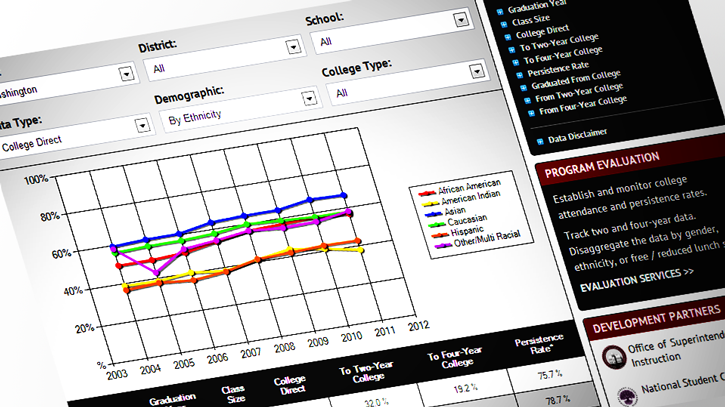- Different denominators. NCES uses the Integrated Postsecondary Education Data System (IPEDS), which contains information collected directly from colleges. When NCES analyzes the data from all participating colleges, they are not tracking recent high school graduates exclusively, but instead they use “first-time” college students. This means that the students in their database did not necessarily just graduate from high school; they could just be enrolling in college for the first time. In contrast, since we are particularly focused on the K-12 system, we are collecting the data directly from Office of Superintendent of Public Instruction (OSPI) and are tracking a particular Washington State high school graduating class over time. When NCES reports their college graduation rates, they are not reporting on a high school graduating class, but rather are reporting on students already enrolled in college (i.e. first-time enrollees). Our data differs from this because we report on the high school graduating class and report what percentage of the high school graduating class complete a college degree within a certain period.
- Different enrollment status. Another difference between College Tracking college graduation rates and NCES reported rates is that NCES is typically reporting on full-time students only whereas we do not limit our database to just full-time students.
- Different degree-completion rules. NCES only reports the degree completion when the degree is completed at (a) the same institution a student initially enrolls in and (b) within six years for four-year schools or within three-years for two-year schools. In our system, it does not matter if they stay at a particular institution and we measure completion within five years whether it is from a two-year or four-year college.
For more information on NCES and how they calculate college completion please refer to their website and the most recent report from them with this information: The Condition of Education 2011.
Kari Peterson, Ph.D. Director of Research



